Studio Visit
Korean Star Lee Bae Reveals His Studio Rituals As He Preps for Dual Outings in New York and Seoul
The artist is having twin solo exhibitions that coincide with Frieze Week in Seoul and Armory Week in New York.
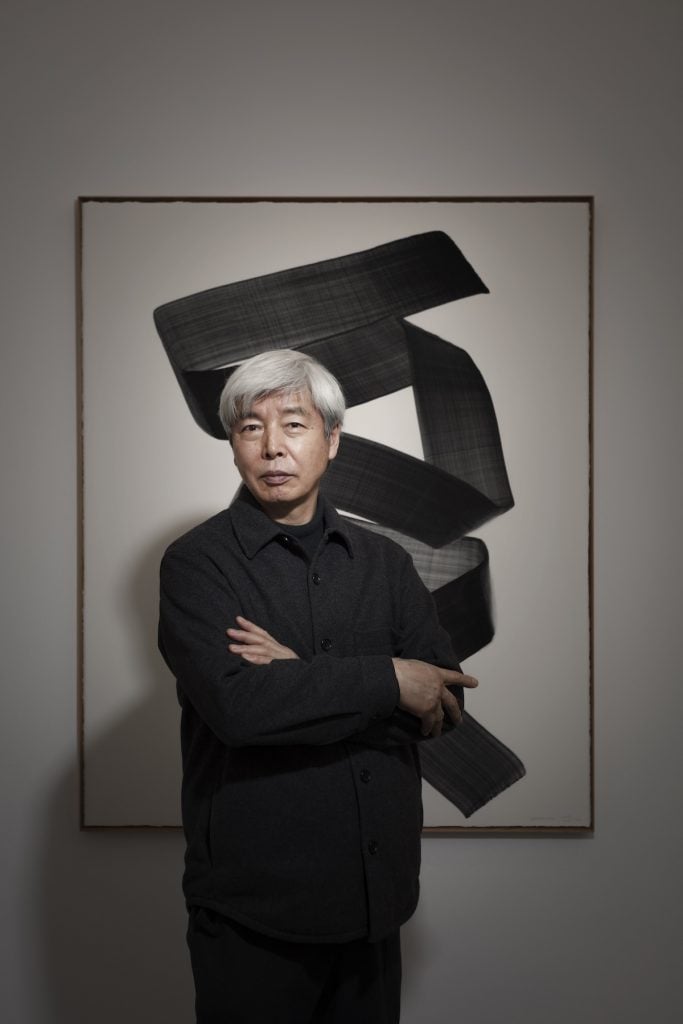
The artist is having twin solo exhibitions that coincide with Frieze Week in Seoul and Armory Week in New York.

Vivienne Chow

Lee Bae has been busy this year. Since opening “La Maison de La Lune Brûlée,” his stunning and serene solo exhibition that is one of Venice Biennale’s official collateral events, in April, the acclaimed Korean artist has been preparing for September solo exhibitions that bridge Seoul and New York—at Johyun Gallery and Perrotin, respectively.
Born in 1956 in Cheongdo, South Korea, Lee is known for his minimalist yet expressive works. Charcoal, his signature medium, has long played an instrumental role in his practice, but he has also worked with charcoal ink and bronze. The gestural, translucent brushstrokes of his charcoal ink paintings reflect the performative elements that are central to his creative process.
His new exhibitions, which open during Frieze Seoul and Armory Week in New York, share the same title: “Between.”
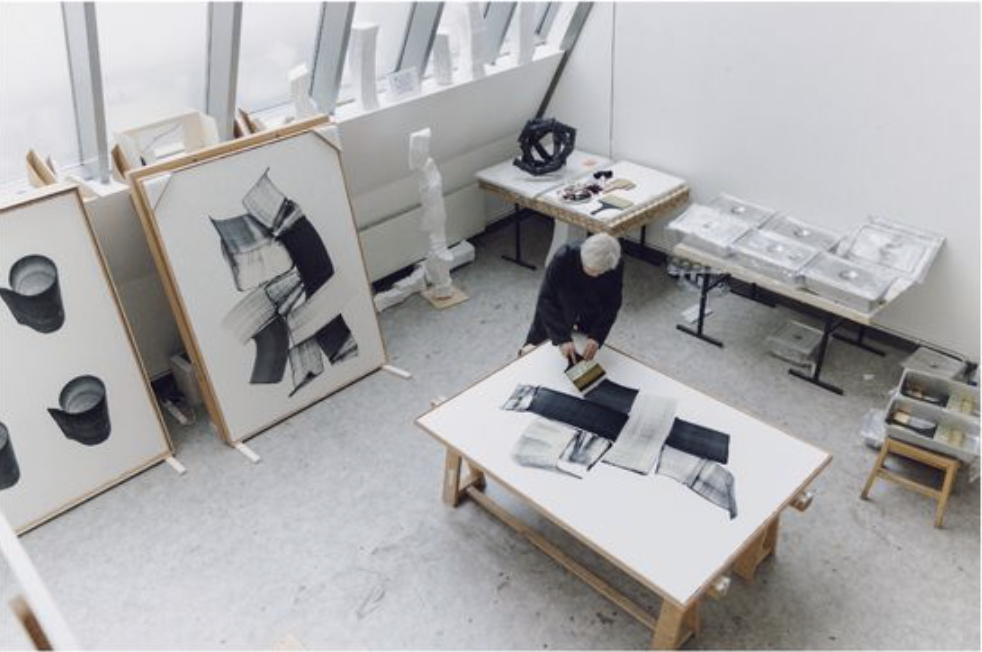
Lee Bae at work in his studio. Courtesy of Perrotin New York.
Lee’s works are fixtures at leading galleries and art fair booths, a reflection of his steady primary market and auction results across Asia. His auction record stands at $369,545 for a wooden charcoal on canvas work that sold at Seoul Auction in November 2021, according to the Artnet Price Database.
We caught up with Lee while he was working on these two shows at his studio in his hometown.
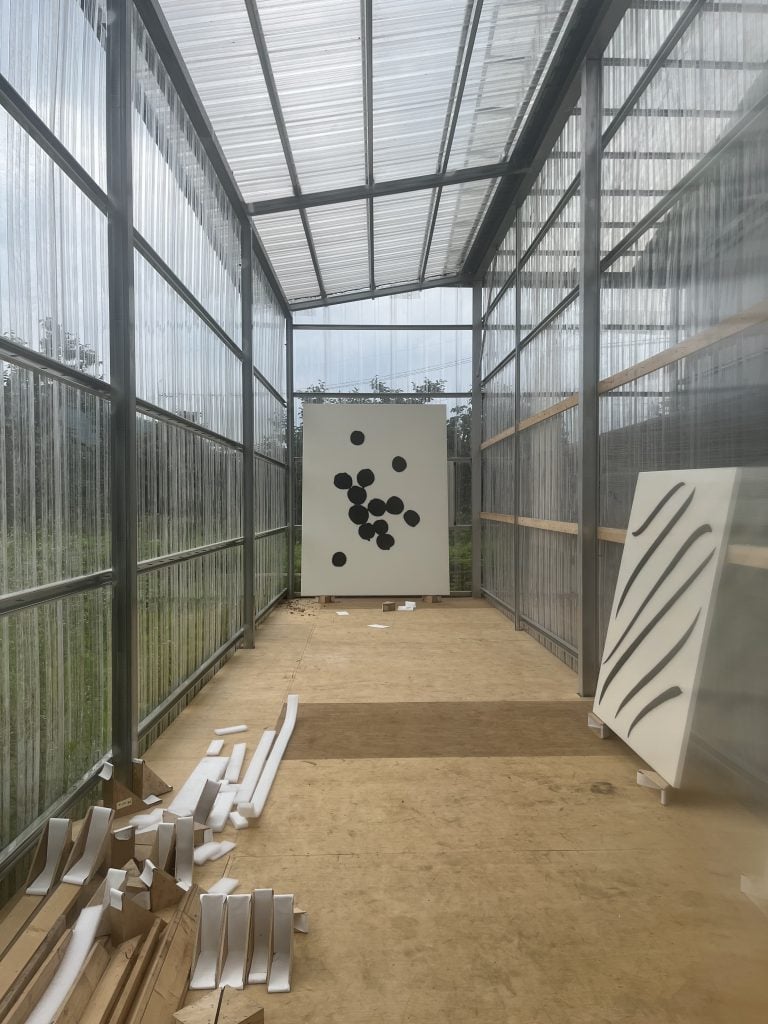
A view of Lee Bae’s studio in Cheongdo, South Korea. Courtesy of the artist’s studio and Perrotin.
Tell us about your studio. How does it compare to other studios you’ve had?
Cheongdo is where I was born and raised. It’s a small, beautiful rural village with mountains, streams, and many small ponds. You can also find prehistoric sites there. In Cheongdo, I use three studio spaces for different purposes based on their locations and characteristics.
The first is a modern studio of about 100 square meters (about 1,100 square feet), built in front of an old traditional hanok (Korean house). Here, I mainly plan for exhibitions, create exhibition models, and draw blueprints to conceptualize how to display artworks. This space also serves as my living area where I sleep and rest.
The second spacious studio was a school, which closed about 25 years ago, located about 10 kilometers (6.2 miles) from my home. This space allows me to create not only paintings but also sculptures and installations.
Lastly, there’s a charcoal kiln located in the mountains near my home. It’s shaped like an Eskimo igloo and made with traditional yellow soil. This is where I burn the charcoal used in my work.
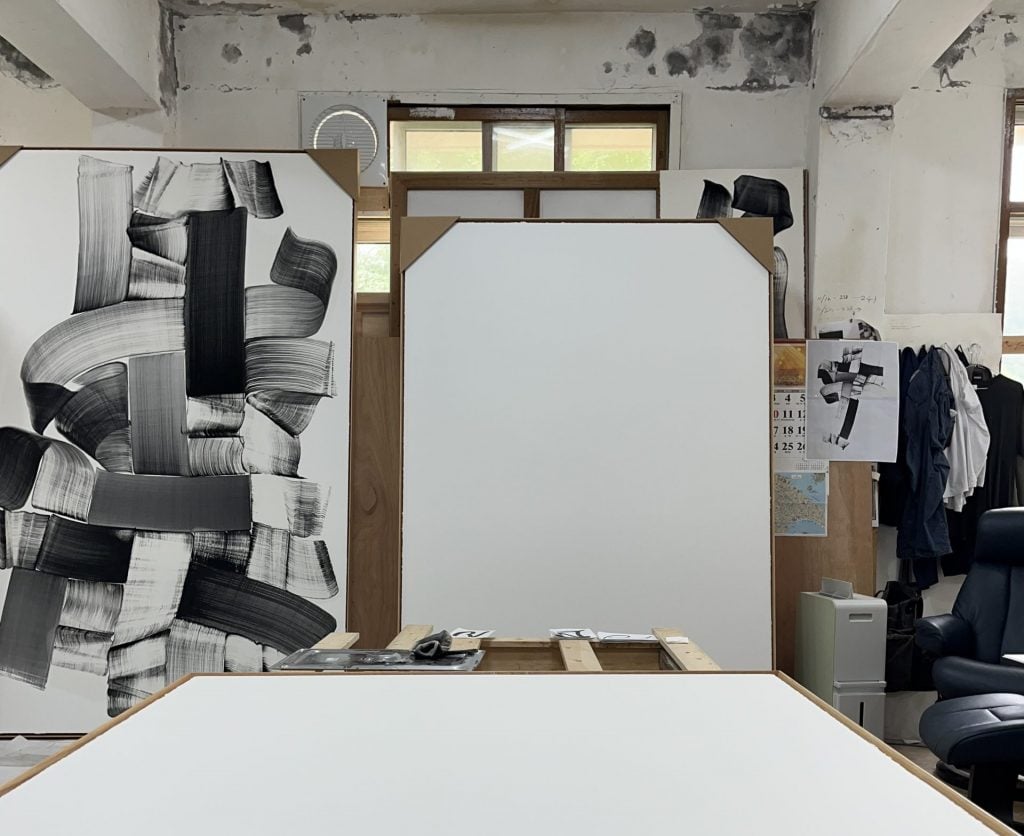
A view of Lee Bae’s studio in Cheongdo, South Korea. Courtesy of the artist’s studio and Perrotin.
What are you working on right now?
I am currently preparing “Brushstroke” paintings and bronze sculptures for an exhibition at the Seoul branch of Johyun Gallery (“Between,” September 4 through November 10), which coincides with Frieze Seoul in September. Additionally, I will be exhibiting at art fairs in Europe and a group exhibition at the Perrotin gallery in Paris, both scheduled for October this year.
What kind of atmosphere do you prefer when you work?
Bodily movement is crucial to my work, so I position the canvas where my body can move most comfortably. I place the canvas horizontally on the floor, raised about 40 cm (15.7 inches), which allows my hands to move easily within this spatial arrangement. While working, I often listen to classical music, particularly piano pieces. This helps evoke personal emotions from within and draws out inspiration. During breaks, I find inspiration by looking at antiques I’ve collected over time, such as Joseon white porcelain, buncheong ware, and calligraphy works.
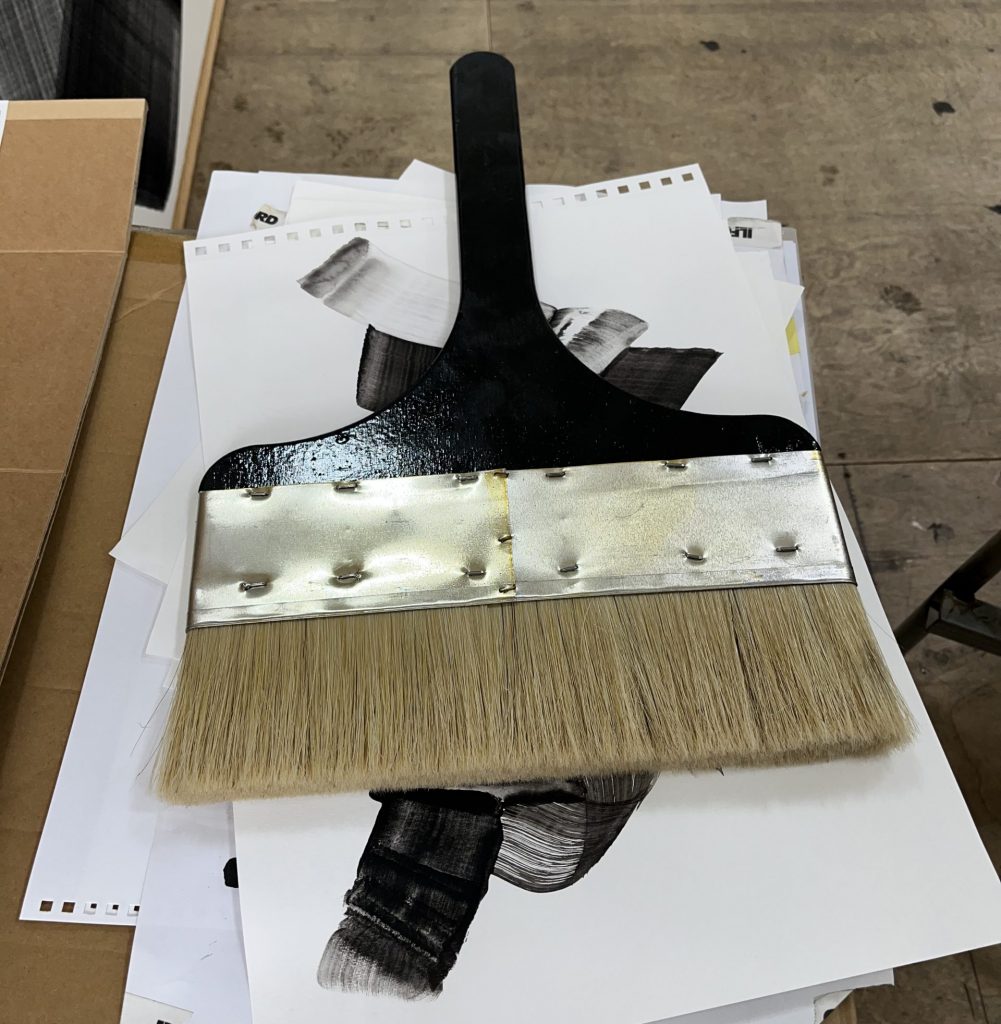
Lee Bae’s brush at his studio in Cheongdo, South Korea. Courtesy of the artist’s studio and Perrotin.
When you feel stuck while preparing for a show, what do you do to get unstuck?
Every time I work in my studio, not just when preparing for exhibitions, I often feel uncertain and overwhelmed. However, I know that creating artwork is not about finding answers. It’s about encountering art through my emotions and aspirations. Artists could be seen as constantly struggling with a poverty of imagination, but I believe that living with this uncomfortable situation is precisely what makes an artist’s life.
What tool or art supply do you enjoy working with the most, and why?
I don’t use pre-made paint—I mix charcoal powder directly with oil paint. The charcoal powder comes from five types of wood: pine, oak, bamboo, willow, and grapevine. The black can appear deep, transparent, or muddy, depending on the kind of wood used. There are also cool blacks and warm blacks, which I usually work with. For brushes, I work with various types, but I mainly use flat brushes with slightly long, stiff bristles. The size of the brush varies according to the size of the canvas, ranging from as small as 20 cm (7.9 inches) to as large as 1 meter (39 inches).
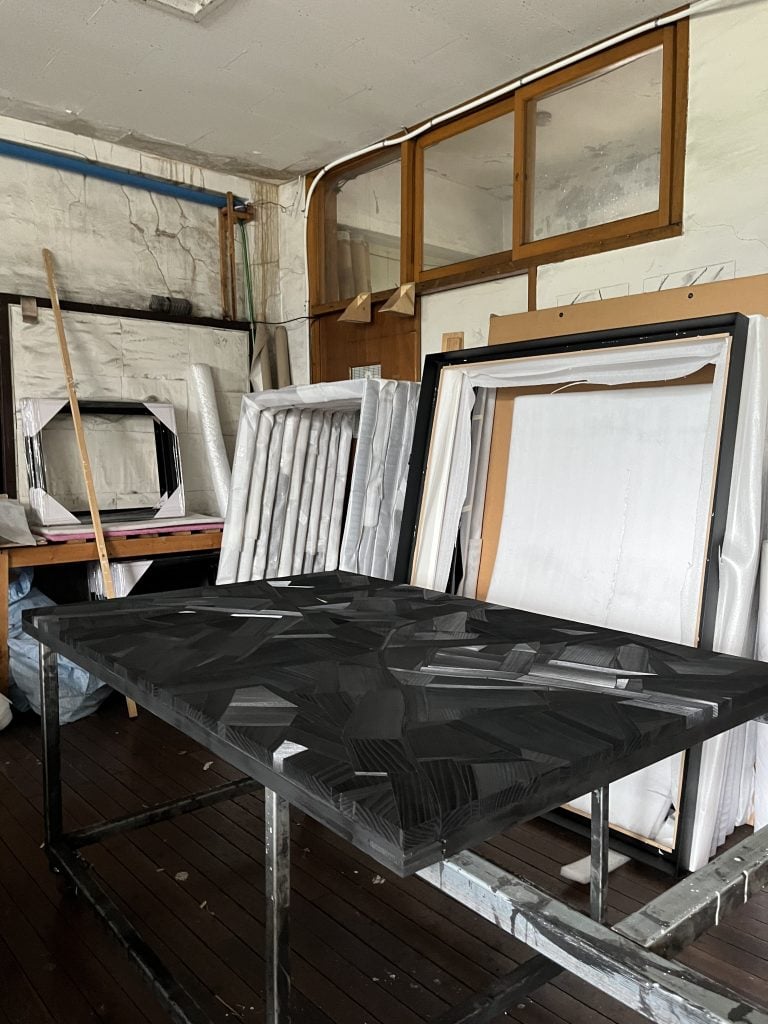
A work in progress at Lee Bae’s studio in Cheongdo, South Korea. Courtesy of the artist’s studio and Perrotin.
Can you tell us about your studio practice in relation to the Venice exhibition and the September New York show? How important is your studio practice to major international projects and site-specific installations?
For the Venice exhibition, I constructed a structure in my Cheongdo studio that is an exact match in size to the space at the Wilmotte Foundation. By transforming this space into a mock exhibition hall, I was able to experiment with various ways of installing and arranging the artworks as I had envisioned. I believe it is essential to create such a space to try out different ideas beforehand in order to successfully realize new approaches on-site.
For my September exhibition at Perrotin New York (“Between,” September 6 through October 19), I also replicated the exhibition space in my Cheongdo studio. I experimented with various installation methods to ensure my concepts were feasible and to prepare for different variables. In New York, I’ve filled the space with various large sculptures and a painted installation piece that references the Venice project. When you walk in, you are confronted with a sculpture from my “Brushstroke” series, before encountering the installation, which somewhat acts as a separate room as it breaks up the large white space into two. Therefore, I believe that my Cheongdo studio is a space where I can explore new forms and methods of work that I haven’t tried before.
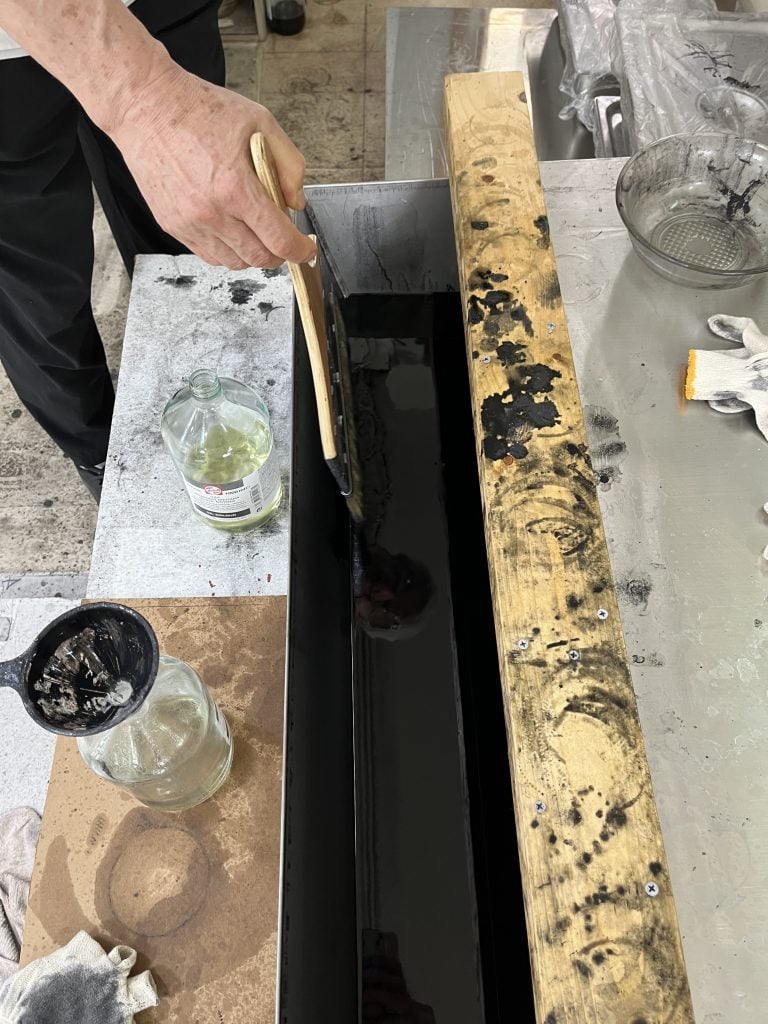
Lee Bae dipping his brush into his unique brand of charcoal ink at his studio in Cheongdo, South Korea. Courtesy of the artist’s studio and Perrotin.
What is a day at your studio like?
My daily routine might be a bit peculiar. I start my day at 4 a.m. with an hour-long dawn service at a small, old church right next to my studio. I pray for the day’s schedule, plans, and exhibition preparations. Around 6 a.m., I begin working in my studio. At this time, I feel most calm and pure, which is perfect for creating art. In the mornings, I focus on two-dimensional works, while afternoons are mostly dedicated to sculptures or three-dimensional pieces. Then, I spend about an hour preparing for the next day’s work. I work until about 3 p.m. Although it’s quite early, I have dinner around 5:30 p.m. Afterwards, I exercise for about an hour and usually go to bed around 8 p.m.
Where do you go for lunch or dinner if you work at your studio?
For breakfast, I usually drink misugaru (roasted grain powder) mixed with water. For lunch, I eat at a restaurant that serves my hometown’s local cuisine, mainly dishes using various vegetables grown in Cheongdo. Having been away from my hometown for 50 years, I’m happily rediscovering the flavors of my childhood. For dinner, I sometimes cook at home or order dishes with fish or duck. My favorite meals are primarily composed of vegetables, such as mushroom bibimbap (a rice dish mixed with various vegetables).